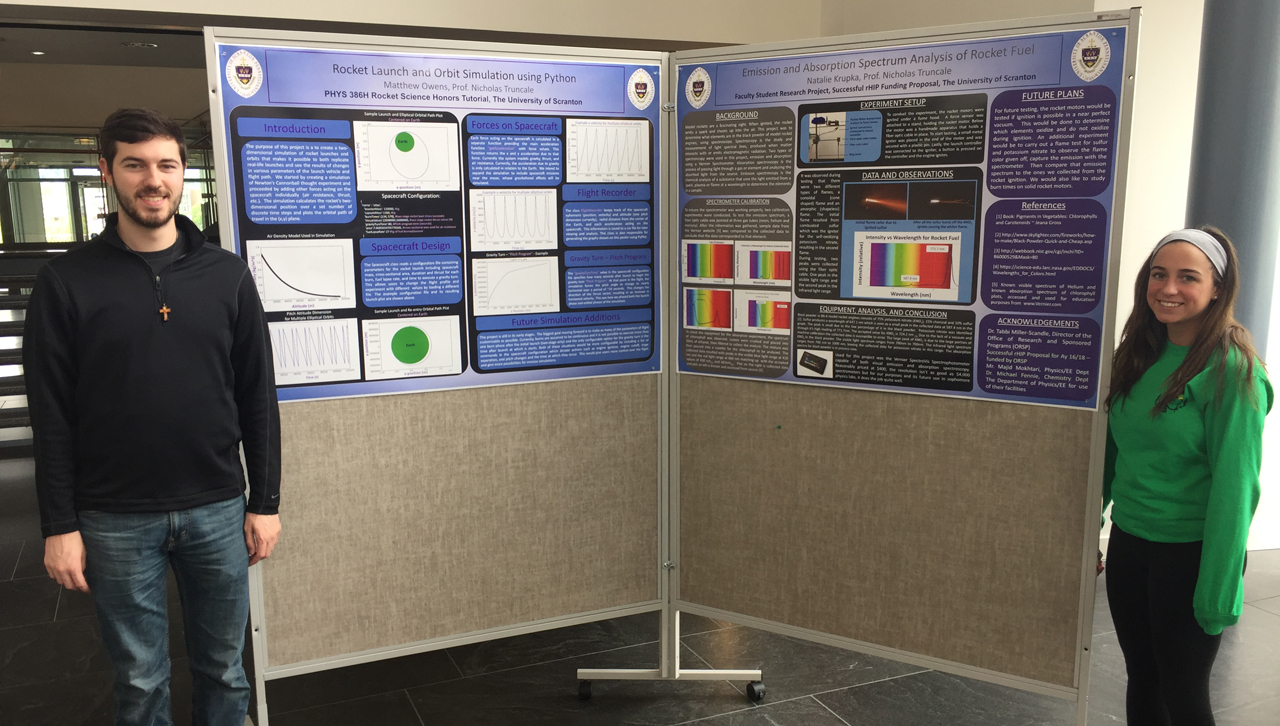Students Research Rocket Fuel and Launch

Undergraduate students research rocket launches and rocket fuel. Read more below from the September Physics/EE newsletter.
Rocket Launch and Orbit Simulation using Python
Matthew Owens ‘17 – Advisor: Prof. Nicholas P. Truncale
The purpose of this project is a to create a two-dimensional simulation of rocket launches and orbits that makes it possible to both replicate real launches and see the results of changes in various parameters of the launch vehicle and flight path. We started by creating a simulation of Newton’s Cannonball thought experiment and proceeded by adding other forces acting on the spacecraft individually (air resistance, thrust, etc). The simulation calculates the rocket’s two-dimensional position over a set number of discrete time steps and plots the orbital path of travel in the (x,y) plane.
Emission and Absorption Spectral Analysis of Rocket Fuel
Natalie Krupka ’20 – Advisor: Prof. Nicholas P. Truncale
To observe the emission and absorption spectrum of rocket fuel, we will be using a PASCO spectrometer in two ways: known light absorption spectrum






